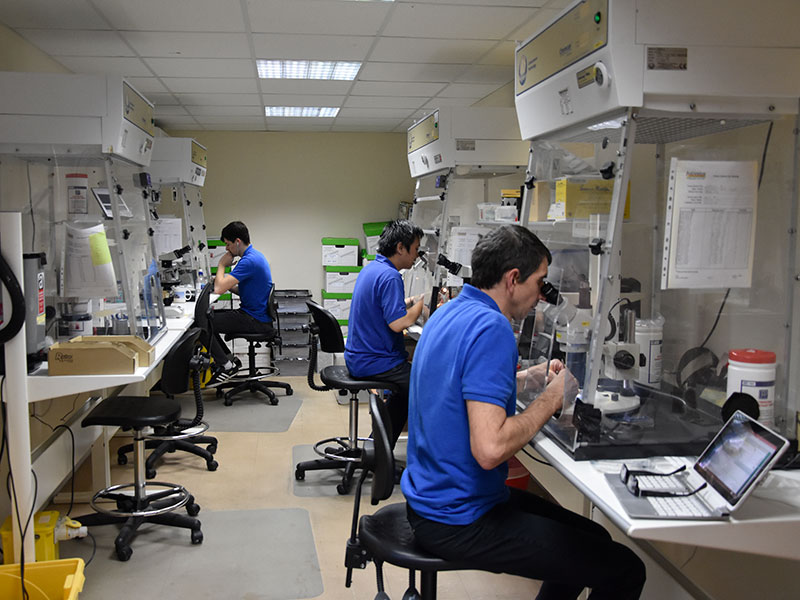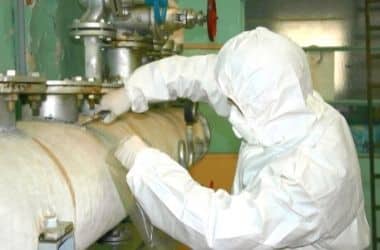The Total Process of Accredited Asbestos Checking to Make Certain Home Conformity
In the realm of residential or commercial property management and conformity, the procedure of accredited asbestos screening stands as a critical component to make certain the safety and well-being of residents. From the first evaluation to the final analysis of outcomes, each stage plays a crucial function in identifying the presence of asbestos within a building.
Accredited Asbestos Screening: First Evaluation
In carrying out the first evaluation for approved asbestos testing, a precise examination of the residential property's products is necessary to properly recognize prospective asbestos-containing materials. This vital step involves aesthetically evaluating all locations of the residential property, consisting of ceilings, walls, flooring, insulation, and various other building products that may harbor asbestos. Special interest is provided to materials that are susceptible to harm or disruption, as these circumstances can release damaging asbestos fibers right into the air. In addition, sampling of thought products may be needed to verify the presence of asbestos through lab analysis.
Approved asbestos assessors comply with strict protocols set by regulative bodies to make certain the accuracy and dependability of the screening process. By meticulously documenting searchings for and making use of innovative testing approaches, assessors can supply residential property owners with a detailed report detailing the visibility of asbestos, if any kind of, and the recommended actions for mitigation or removal. This preliminary evaluation establishes the foundation for succeeding activities to resolve asbestos problems and ensure the safety and compliance of the building.
Sample Collection Procedures for Asbestos Evaluating
Efficient sample collection procedures are necessary in ensuring precise asbestos screening results and conformity with governing standards. When collecting examples for asbestos screening, it is important to comply with rigorous procedures to minimize the threat of contamination and guarantee the dependability of the outcomes.
Firstly, it is very important to identify the thought asbestos-containing products (ACMs) and prioritize tasting areas based upon aspects such as the material's problem, availability, and capacity for disruption. Asbestos Testing. Examples should be collected from different places within the property to give a detailed evaluation of asbestos visibility
Throughout example collection, certified experts should wear suitable individual safety equipment (PPE) to secure against asbestos direct exposure. They should utilize tidy tools, such as non reusable handwear covers and plastic bed linen, to avoid cross-contamination between samples. Examples must be carefully collected using a specified technique, such as damp wiping or coring, and firmly secured in closed containers to protect their integrity during transport to the lab for analysis.
Laboratory Evaluation Process for Asbestos Samples
Upon conclusion of the sample collection procedure, the asbestos samples are meticulously delivered to recognized laboratories for thorough analysis. At the research laboratory, educated technicians manage the examples with severe like stop any cross-contamination or example degradation. The very first step in the laboratory analysis procedure is example preparation, where the collected examples are thoroughly processed to Asbestos Testing remove the asbestos fibers. Asbestos Testing. This step is essential to guarantee exact results in the subsequent analysis.

Once the analysis is full, a comprehensive report is generated, describing the findings and confirming whether asbestos exists, the type of asbestos fibers identified, and the focus levels. This details is crucial for homeowner to take the necessary actions to make certain compliance with asbestos guidelines and guard the health and wellness of occupants.

Reporting and Analysis of Asbestos Test Outcomes
Accredited asbestos screening research laboratories give thorough reports that use crucial understandings right into the visibility, type, and focus levels of asbestos fibers discovered in examples gathered from residential or commercial properties. These reports are essential for residential property owners and managers to understand the danger presented by asbestos and make informed useful site choices concerning its administration or elimination. The records normally consist of details on the methods utilized for screening, the areas where samples were taken, the type of asbestos identified (such as chrysotile, amosite, or crocidolite), and the concentration levels useful source of asbestos fibers spotted.
Analyzing these results calls for competence to examine the potential health threats associated with asbestos direct exposure, determine the appropriate strategy, and ensure governing conformity (Asbestos Testing). Relying on the findings, recommendations may range from proceeded tracking and maintenance to encapsulation or full asbestos reduction. Homeowner must very carefully assess these records and seek advice from asbestos experts to develop a detailed strategy for dealing with any type of asbestos issues identified
Guaranteeing Residential Property Compliance With Asbestos Rules
To maintain adherence with asbestos laws, home proprietors have to faithfully implement steps to make certain conformity with relevant laws and standards. Once asbestos is identified, home proprietors have to comply with asbestos monitoring plans that summary appropriate control, elimination, or encapsulation treatments to avoid direct exposure and spread of asbestos fibers.
Homeowner need to offer asbestos recognition training to staff members and passengers to decrease the threat of asbestos direct exposure and ensure correct handling of products that might have asbestos. In addition, it is vital to remain notified about any kind of updates or adjustments in asbestos regulations to readjust monitoring practices as necessary. By proactively resolving asbestos compliance requirements, property owners can produce a secure environment for residents and reduce possible lawful and health threats related to asbestos exposure.
Verdict
Finally, recognized asbestos testing is an important process for making certain home compliance with regulations. The initial analysis, sample collection treatments, laboratory analysis, and analysis of outcomes are very important actions in this procedure. By complying with these procedures, residential or commercial property proprietors can identify and deal with any kind of asbestos threats existing, protecting the wellness and safety of occupants and keeping compliance with regulative requirements.